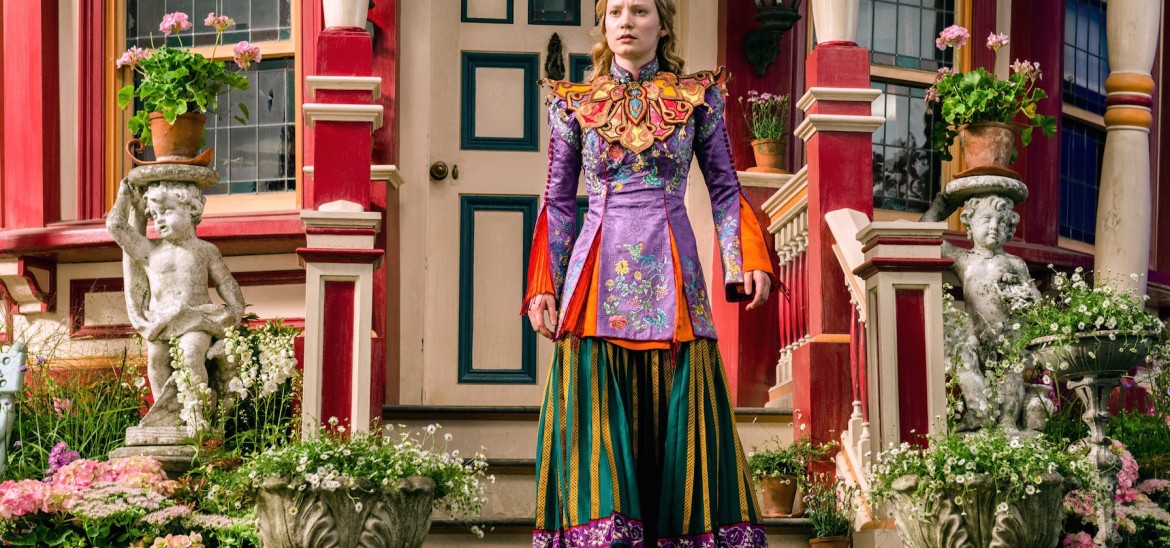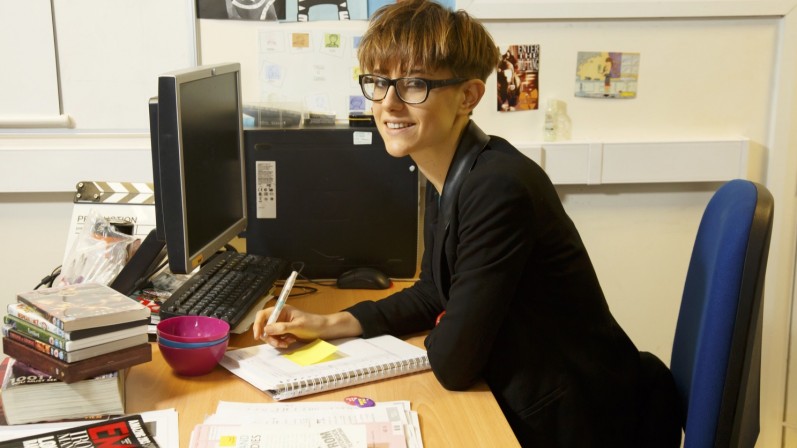Into Film Clubs
Find out everything you need to know about starting an Into Film Club.



Imagination is the only weapon in the war against reality
The Cheshire Cat
Alice Through The Looking Glass is a new adventure reuniting many of Lewis Carroll's beloved characters, along with some new faces. Grown-up and captaining her own ship, Alice is facing problems back in London, and so returns to the Underland, only to discover that something is the matter with the Hatter. In order to save him and his family, Alice must travel through time, using a strange device known as a 'chronosphere' obtained from the human personification of Time himself. Along the way she must fight off the Red Queen Iracebeth, as she attempts to steal the chronosphere for herself.
The literary origins of Alice's Adventures In Wonderland are legendary. Oxford maths tutor Charles Lutwidge Dodgson first told the tale to the daughters of a friend during a rowing tip in July 1862. One of the daughters - 10-year old Alice Liddell - asked Dodgson to write a book of his tale, in which a young girl falls down a rabbit hole into a strange and magical kingdom. Eventually, in 1865, the text was finally published for all to read, with Dodgson using the pseudonym Lewis Carroll. The story delighted readers with its curious cast of unusual characters and changed children's literature forever. Since then, the book has been translated into 176 different languages, and a sequel appeared in 1871. Carroll's stories have massively influenced the worlds of literature, fashion, music, art and - of course - film.
Not surprisingly, given the source material, Carroll's stories have inspired numerous film adaptations. The first version appeared early in cinema history, in 1903, and was heavily influenced by Sir John Tenniel's original illustrations from the books. It used elaborate camera tricks to pass off the illusion that Alice was growing and shrinking in size. The next significant adaptation, in 1933, utilised an all-star cast, including Cary Grant and Gary Cooper, often unrecognisable under elaborate costumes.
Disney first adapted the story in 1951, with the colourful animation overcoming a hostile initial reaction to become one of their most enduringly popular films. English director Jonathan Miller took the story in a scarier direction in 1966, whilst legendary Czech animator Jan Svankmajer made his feature debut in the gloriously surreal Alice, a combination of live-action, puppetry, and stop-frame animation. The influence of the stories can also be seen in films such as Labyrinth, Spirited Away, Coraline and The Matrix, to name but a few.
With previous director Tim Burton stepping back to act as producer, British director James Bobin had the daunting prospect of following up one of the most commercially successful films of all time. With a background in pioneering television comedy, and having previously directed two Muppets films, it was the comedic, surreal and gently satirical elements of the story that first attracted him to the film. Keen to develop a stronger emotional connection between the characters, Bobin also wanted to infuse the film with his love of history.
With the 2010 film already containing a significant amount of story from the books, this meant the filmmakers had a great deal of freedom in creating a fresh story for the follow-up. However, the idea of introducing Time as a character actually stems from Lewis Carroll himself. Early on in Alice's Adventures In Wonderland, the Hatter tells Alice "I'm stuck in this tea party because last March Time and I quarrelled". A curious part-human/part-clock creation, it initially appears that Time will be the villain of the piece, but as the story goes on, his character becomes more complicated.
Whereas the 2010 film was dominated by Johnny Depp's Mad Hatter, this is definitely Alice's story, with the intelligent young woman firmly at the film's heart. Alice is confident in her own decisions and opinions, but comes up against antiquated ideas regarding women and is forced to realise that the future she envisaged for herself may not be possible. Against this real world backdrop, Alice finds herself back in Underland, and what she learns there has as much consequence on her life back home as it does for the Hatter and friends. Alice is a modern woman in a very un-modern world, and it was her parallels to a generation of women that were looking to take on a stronger role in society that appealed to Bobin and his love of history. Alice Loddell, the inspiration for Alice, was born in the 1850s, the same period as Emmelline Pankhurst, founder of the Suffragette movement, and the filmmakers were keen to explore what Alice represents for women's role in society at the time.
In the world of Lewis Carroll, anything goes, and combining that fact with modern technology means that filmmakers are bound only by the limits of their imaginations. For this film, Bobin and his production designer Dan Hennah had three key approaches to their elaborate worlds: to pay homage to the original illustrations; to honour the gothic visual style developed by Tim Burton; and to have the freedom to dream up anything they wanted.
Keen to use as many practical locations as possible, the process of creating these fantastic settings was painstaking. Recreating a bustling 1860s London (in Gloucester Docks) took weeks of preparation, as the team needed to hide any visible signs of the modern world. For Iracebeth's castle in the Outlands - which resembles a giant red heart made from organic materials like wood, vines, leaves and brambles - the art department spent 15 weeks creating layer upon layer of hand-carved materials to line the walls of the chamber, which were then painted and treated to look suitably ominous.
Despite all of the elaborate production design and wild imagination, stories such as these still have to be grounded in relatable human emotions. The film is ultimately about relationships: between a mother and a daughter; a father and a son; and between two sisters. It is also a story of friendship and learning to be true to yourself, even when other people are trying to convince you to be something else.
Alice Through The Looking Glass also marks the final screen appearance of the great Alan Rickman. It would be a fitting testament to both the film and his legacy if audiences were inspired to not allow time to stand still, and instead go back and rediscover what made Rickman one of the most memorable and compelling British actors in history.
Viewing 4 of 5 related items.

Get in touch with your article ideas for the News and Views section.